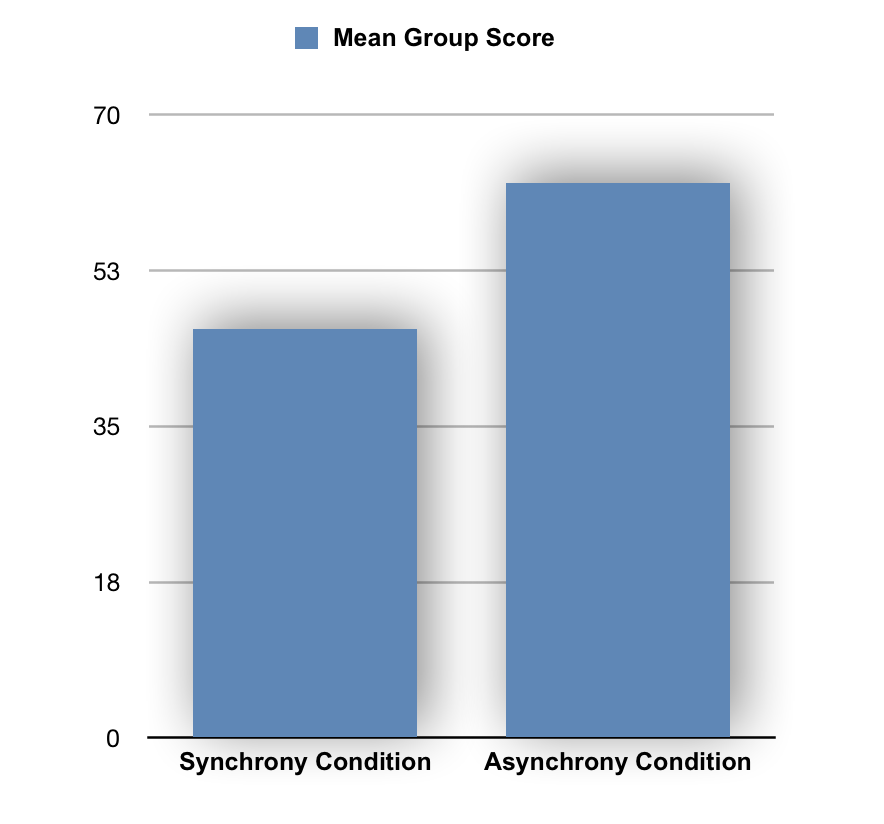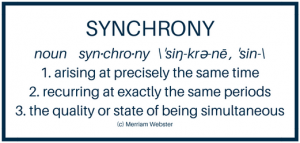Here’s an interesting fact: no other animals can keep a beat as well as humans can. From drumming to dancing to marching in time, humans have a unique knack for synchrony – repetitive, rhythmically entrained, social behavior. Researchers have found that keeping the beat together makes people more cooperative, friendly, and well-disposed toward one another. It’s like a built-in switch for social bonding.
These findings have led many writers to suggest that synchrony and rhythm were important in the evolution of religion and ritual. But is synchrony always the right tool for bringing people together? If not, what does that say about religion, ritual, and evolution?
Most previous studies of synchrony’s prosocial effects have focused on cooperation and trust. For example, economics games might measure participants’ willingness to contribute to group resources after keeping a beat together. By and large, these studies have found that subjects who perform synchrony – whether marching in lockstep or simply tapping fingers – are more generous and trusting toward one another afterward.
But CMAC researchers Connor Wood and Catherine Caldwell-Harris wondered whether synchrony and rhythm would also help practical goals that required intricate group collaboration and coordination. Unlike mere cooperation, collaboration and coordination often involve contributors taking on different roles at the same time, meshing their efforts in a complementary way. For example, a construction site might host a construction manager, crane operators, and welders.
Some researchers have suggested that the positive social effects of synchrony are the result of self-other overlap. When your brain sees that others’ motor actions are coming right in time with your own, it may get “tricked” into thinking that the other people are actually under its own control. That is, synchrony might literally convince your brain that other people are extensions of you. This lowering of normal barriers between self and other may, in turn, make you feel more cooperative and prosocial.
But barriers between self and other are often important for collaborative and task-oriented settings. Managers have different jobs than welders or surveyors for a reason: if everyone on a construction site tried to perform the same job, chaos would result. Wood and Caldwell-Harris thought it was possible, then, that synchrony might have a negative effect on group dynamics in a context where interdependent collaboration was necessary for carrying out a shared task.
For the study, research subjects in groups of three came into the lab and swung pendulums together in time to metronome beats. In one condition, subjects swung their pendulums in synchrony with one another, listening to a single metronome. In the other condition, subjects were each given their own metronomes and headphones and stood facing away from each other. Since each metronome was tuned to a different rhythm, these subjects swung their pendulums out-of-time.
Each team then was given a shared task to carry out. In this task, they had to work as a team to write new sentences using lists that each team member found in a word search. Every sentence had to include at least one word from each individual team member’s list. This meant that every decision had to be painstaking, as team members negotiated based on who had which words. Subjects had to take turns and assume different roles – for example, only one person was needed to write down the sentences. Finally, subjects filled out a series of surveys asking how they felt about each other after the task.
In contrast to most previous research on synchrony, the results showed that, by several measures, subjects who had participated together in synchrony experienced more conflict and felt less affiliation with their teammates than subjects who’d swung their pendulums out-of-synch. More notably, subjects in the non-synchrony condition performed significantly better on the group sentence task (Figure 1).
 Wood and Caldwell-Harris interpreted their results to suggest that synchrony may interfere with complex social coordination. By lowering the psychological barriers between separate people, synchrony may reduce their ability to play separate roles – for example, leader and follower – which impedes progress toward goals that require complementary behavior. Performing more poorly on a complicated task may, in turn, make people feel less bonded to one another.
Wood and Caldwell-Harris interpreted their results to suggest that synchrony may interfere with complex social coordination. By lowering the psychological barriers between separate people, synchrony may reduce their ability to play separate roles – for example, leader and follower – which impedes progress toward goals that require complementary behavior. Performing more poorly on a complicated task may, in turn, make people feel less bonded to one another.
How do these results reflect on religion, human evolution, and ritual? Well, many researchers have suggested that synchrony is a prototypical feature of ritual, precisely because it bonds people together uniformly. But anthropologists and social theorists have long argued that ritual doesn’t just bring people together – it also creates differences. For example, a wedding ceremony places two people in a unique, set-apart relationship, essentially highlighting their distinctiveness from other people around them (and foreclosing other mating options).
While much ritual has a bonding function, then, not all bonds are forged in social unison. Ultimately, in order to better understand ritual and human evolution, this study illustrates that we’ll need to investigate the roots of social differences and distinct roles as well as of group unity.
Citation: Connor Wood, Catherine Caldwell-Harris, and Anna Stopa (2018). “The Rhythms of Discontent: Synchrony Impedes Performance and Group Functioning in an Interdependent Coordination Task,” Journal of Cognition and Culture 18 154-179.
See the paper here, or check out a preprint here. Read a longer, more in-depth blog post at Patheos about it here.
For any inquiries or comments, please email admin@mindandculture.org.




